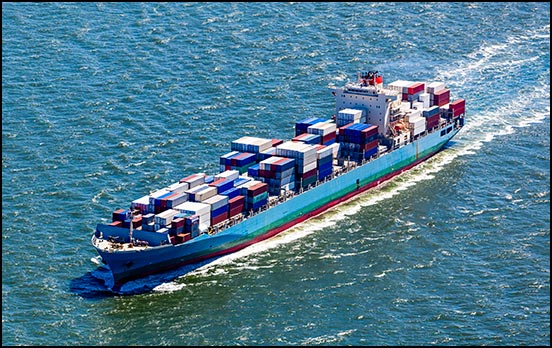MARKETING...

Beef Exports Helping Cattle Markets
The top six U.S. beef-importing countries account for 86% of total beef exports.
U.S. beef exports for the first three months of the year are up 12.2% with March up 11.4%. So far in 2018, the United States has exported beef to 100 different countries. However, 85 of those countries account for only 5.9% of year-to-date beef exports. The top 15 beef export markets represent 94.1% of exports, with the top six markets accounting for 86.5% of total beef exports.
The No. 7 to No. 15 export markets account for 7.6% of beef exports. Most of these are small markets with limited potential to be significantly bigger markets for U.S. beef. These markets include such countries as Chile, Philippines, Netherlands, Guatemala, the Dominican Republic and United Arab Emirates. Vietnam, currently No. 10, has been as high as the sixth-largest export market; however, most of that is believed to be transshipments into China. Read more.
In the Cattle Markets
2018 beef exports off to a strong start.
Beef exports during the first quarter of 2018 have continued (and built upon) the increases seen last year. According to the latest livestock and meat international trade data released on May 4 by the Economic Research Service (ERS), beef and veal exports during the month of March totaled approximately 261 million pounds (lb.). This is the largest total for the month of March on record and is an 11.4% increase over March of 2017. This follows year-over-year increases in January and February. Year-to-date, exports are 12.2% higher than during the first quarter of 2017. Read more.

Justin Sexten
Why ‘veggie meat’ won’t replace beef.
Lately the news is overrun with features on how we humans plan to shift away from meat as we’ve always known it to plant-protein alternatives. Personally, I refuse to call it meat; vegetables and legumes in a meat-like form perhaps, but meat it is not.
“Lab meat,” despite not being commercially available, continues to garner news coverage with the implication it may be coming soon to a store near you. The troubling aspects of these products are the claims they make against the efficiency of and the methods we use in raising cattle and the suggestion that these alternatives are more sustainable than the ruminant model. Recent research offers some compelling arguments that will add to our enjoyment of watching cows and yearlings graze pastures this spring. Read more.
Light Weights, Heavy Impact
Weather and market conditions important to annual low carcass weights.
The USDA carcass-weight data for the week beginning April 30 brings us ever closer to the lowest anticipated fed steer and heifer carcass weights of 2018. It’s commonly understood that the youngest calf-fed, spring-born animals comprise much of the fed-cattle harvest in May. That brings carcass weights down to their annual lows, as seasonal data have proven time and again.
In the past five years, the exact week marking the annual low has varied from early to late May and we have no certainty as to exact timing. The USDA report on actual carcass weight is always two weeks in arrears, but the first week of May’s estimated weights show dressed weights still declining, down 6 pounds (lb.) on the week prior. The graph depicting CAB carcass weights matches very closely with the USDA fed steer and heifer report, with Certified Angus Beef® (CAB®) carcasses running just 4 lb. heavier than the average of all steers and heifers so far this year. Read more.

Ginette Gottswiller
The Source
Celebrate with AngusSource as it grows.
You’ve got to love spring. Spring brings a new set of calves and holidays or events that celebrate a new beginning. Who doesn’t get excited about Easter, Mother’s Day and graduations? This year AngusSource® will be celebrating, too.
AngusSource is going to graduate from offering only USDA age and source verification to offering a total of five third-party-verification programs. The American Angus Association is excited to announce the new AngusSource lineup that will continue to help producers who wish to use value-added programs to earn the most for their feeder calves. Read more.
Beef Producers Contribute to
Societal, Economic Fabric of Kansas
Delicious, nutritious food is just the start of what cattlemen contribute.
Many products get publicity and special recognition during the year. In Kansas, if any product deserves its own month, it’s beef. That’s why Kansas Governor Jeff Colyer has declared May as Beef Month in the state. This declaration makes this the 34th consecutive year beef has received this honor.
According to Kevin Thielen, executive director of the Kansas Beef Council, the value of beef to the economy and social fabric of the state is remarkable.
“With more than 6.3 million cattle on ranches and in feedyards in the state, Kansas ranks third in the country,” says Thielen. “That’s more than twice the state’s human population. Kansas cattle producers are proud of the nutritious, delicious beef they help bring to tables in this state, across the country and around the world.” Read more.
Market Opportunities
Bullish cash, bearish futures provided opportunities.
The currentness of fed-cattle supplies (i.e., lighter finished weights and early marketing of fed cattle) in May had some implications for the high-quality cattle market. Earlier suggestions that the share of Choice- and Prime-grading fed cattle would decline less than usual in early May proved wrong, but it all makes sense today. Tight cattle supplies and a historically wide June basis (cash higher than futures) combined to push carcass weights rapidly lower.
Cattle contracted by feeders to packers have to ship in the specified contract month, so even if feeders would like to add days to the feeding period for cattle performing below projections (due to winter feeding conditions, for instance), their hands are tied by the contract in most cases. Read more.







